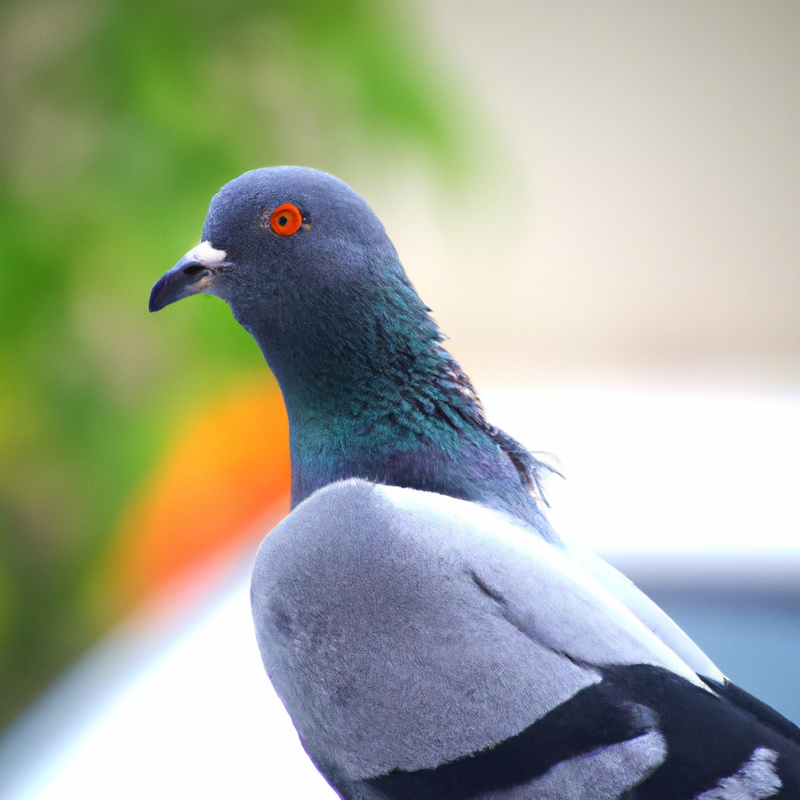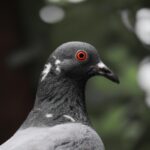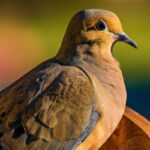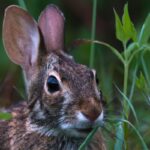Key Takeaways:
- Band-tailed pigeon hunting is allowed in California under certain regulations.
- Proper licensing and tagging are required for hunters targeting band-tailed pigeons.
- The hunting season for band-tailed pigeons in California typically runs from September to January.
- It is important for hunters to be aware of bag limits and other restrictions imposed by the state.
Imagine waking up before the crack of dawn, stepping out into the crisp California air, and experiencing the thrill of pursuing the elusive and graceful Band-tailed Pigeon. As an expert hunter in California, I’ve spent countless hours honing my skills and exploring the diverse habitats where these magnificent birds reside.
In this article, I will guide you through everything you need to know about hunting Band-tailed Pigeons in California, from understanding the hunting regulations and required licenses to finding the perfect hunting spot and employing effective techniques.
So, get ready to embark on an unforgettable hunting adventure filled with adrenaline, camaraderie, and delicious rewards.
Pros | Cons | |
Nutrition | High in protein, vitamins, and minerals | May contain lead if shot with lead ammunition |
Experience | Enjoyment of outdoor activity | May require large time commitment |
Regulations | Legal to hunt with proper license | Strict bag limits and hunting seasons |
Overview of Band-tailed Pigeons
Band-tailed pigeons are large, migratory birds found in California and other parts of North America.
These pigeons have a distinct appearance, with a grayish body, a pale neck band, and a dark, iridescent head.
They are known for their low-pitched, owl-like calls.
Band-tailed pigeons primarily feed on acorns, berries, and other fruits, and they prefer to roost and nest in dense forests.
They are a popular game bird species in California, attracting hunters due to their challenging flying patterns and delicious meat.
Conservation efforts are in place to manage and sustain the band-tailed pigeon population.
Hunting Regulations and Seasons in California
Understanding the Legalities of Band-tailed Pigeon Hunting
When hunting for band-tailed pigeons in California, it is important to understand the legalities. Here are some key points to keep in mind:
- Hunting License: You must have a valid California hunting license to legally hunt band-tailed pigeons. Make sure you have the appropriate license before heading out.
- Bag Limit: There is a daily bag limit for band-tailed pigeons, which means you can only harvest a certain number of birds per day. Currently, the bag limit is 2 pigeons per day.
- Season Dates: Band-tailed pigeon hunting has specific season dates. Make sure to check the California Department of Fish and Wildlife website for the most up-to-date information on the hunting season.
- Protected Areas: Some areas may be off-limits for hunting band-tailed pigeons due to protected status or other regulations. Familiarize yourself with hunting areas and zones to avoid any violations.
- Migratory Bird Treaty Act: Band-tailed pigeons are protected under the Migratory Bird Treaty Act, which means certain federal regulations apply. It is important to comply with these regulations to avoid penalties.
By understanding and following these legalities, you can enjoy band-tailed pigeon hunting responsibly and within the boundaries of the law.
Hunting Seasons and Bag Limits for Band-tailed Pigeons in California
In California, the hunting season for Band-tailed pigeons typically runs from September to December. The bag limit for these pigeons is two per day and four in possession.
It’s important to note that these regulations may vary depending on the specific wildlife management area or zone.
Make sure to check the California Department of Fish and Wildlife website for any updates or changes to hunting seasons and bag limits. Always adhere to these regulations to ensure both the safety of the species and a positive hunting experience.
Required Licenses and Permits
Hunting Licenses for Band-tailed Pigeon Hunting in California
To hunt band-tailed pigeons in California, you will need a valid hunting license. In addition to the general hunting license, you must also possess a California Upland Game Bird Stamp.
This stamp covers specific upland game birds, including the band-tailed pigeon.
It is important to note that there may be additional regulations and restrictions for hunting band-tailed pigeons, such as bag limits and hunting seasons. Be sure to check the California Department of Fish and Wildlife website for the most up-to-date information.
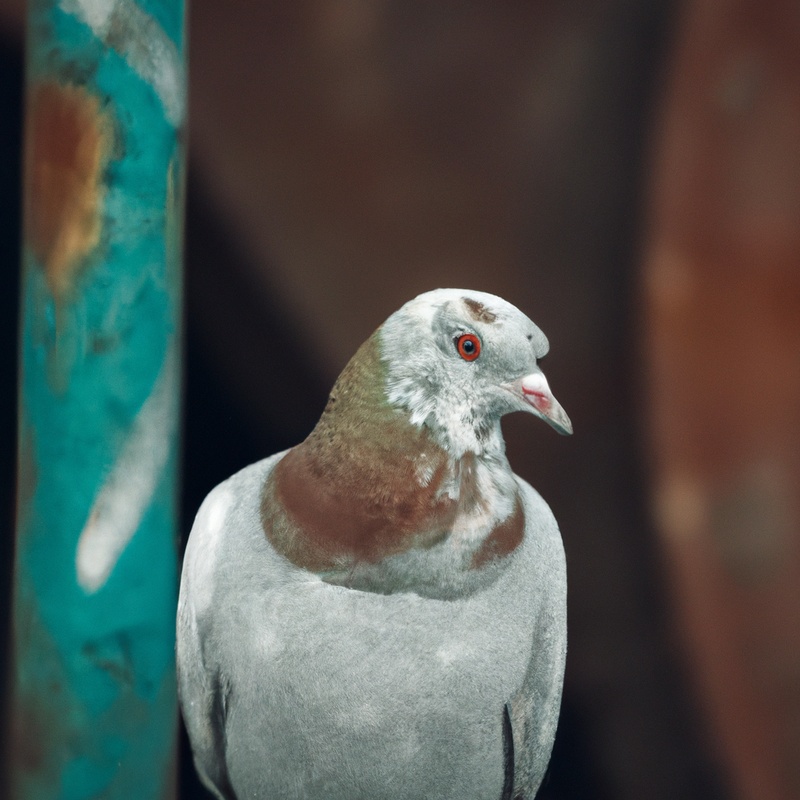
Federal Migratory Bird Stamp and Harvest Information Program (HIP)
The Federal Migratory Bird Stamp and Harvest Information Program (HIP) are important for hunters in California. The Federal Migratory Bird Stamp, also known as the Duck Stamp, is required for all waterfowl hunters aged 16 and older.
This stamp helps fund conservation efforts to protect migratory bird habitats.
Additionally, hunters must participate in HIP by providing information about their harvest, which helps wildlife agencies in managing bird populations. It’s crucial to obtain the Federal Migratory Bird Stamp and comply with HIP requirements to ensure responsible hunting and contribute to bird conservation efforts.
Gear and Equipment for Band-tailed Pigeon Hunting
Firearms and Ammunition Suitable for Band-tailed Pigeon Hunting
When choosing firearms and ammunition for band-tailed pigeon hunting, there are a few key factors to consider. I recommend using a shotgun with a gauge of 12 or 20, as this provides sufficient power and versatility for this type of hunting.
In terms of ammunition, opt for shells with a shot size of #6 or #7.5, as these sizes are effective for taking down band-tailed pigeons while minimizing the risk of over-penetration.
Additionally, make sure to abide by local regulations regarding firearm and ammunition restrictions. Happy hunting!
Essential Hunting Gear and Clothing for Pigeon Hunting
When preparing for pigeon hunting, it’s important to have the right gear and clothing to ensure a successful and comfortable experience. Here are some essentials you should bring:
- Shotgun: A reliable shotgun with a modified choke is ideal for pigeon hunting.
- Camouflage clothing: Blend into your surroundings with camo pants, jacket, and hat for improved stealth.
- Decoys: Bring a variety of realistic decoys to attract pigeons to your hunting area.
- Binoculars: Use binoculars to spot pigeons from a distance and plan your approach.
- Face mask and gloves: These will help conceal any exposed skin, reducing the chance of detection.
- Ammo: Carry plenty of appropriate ammunition, such as high-quality steel or lead shot.
- Game bag: Keep your harvested pigeons secure and protected in a durable game bag.
- Comfortable boots: Invest in waterproof and insulated boots to keep your feet dry and comfortable in any weather.
- Ear protection: Protect your hearing from the loud shotgun blasts by wearing earplugs or earmuffs.
- Snacks and water: Stay hydrated and fueled with water and snacks throughout the hunt.
Remember to check local hunting regulations and obtain the necessary licenses or permits before heading out. Happy hunting!

Choosing the Right Hunting Spot
Identifying Common Habitats and Locations for Band-tailed Pigeons
Band-tailed pigeons can be found in a variety of habitats and locations in California.
These birds prefer areas with coniferous forests, especially those with large pine and oak trees.
They are known to inhabit both coastal and inland regions, including mountainous areas.
Look for band-tailed pigeons near feeding sources like native fruits, acorns, and berries.
They are attracted to water sources such as rivers, streams, and lakes, so keep an eye out near these areas.
Band-tailed pigeons are also known to roost in tall trees, so scanning the treetops can increase your chances of spotting them.
Scouting Techniques and Tips for Finding Pigeon Hotspots
To find pigeon hotspots during your hunt in California, you’ll need to scout effectively. Here are some techniques and tips to help you locate these areas:
- Look for feeding grounds: Pigeons are often attracted to agricultural fields, especially if they contain crops like peas, cereals, and sunflowers. Keep an eye out for areas with abundant food sources.
- Check water sources: Pigeons need access to water for drinking and bathing. Look for ponds, streams, or lakes in the vicinity of potential hunting grounds.
- Watch for roosting sites: Pigeons typically roost in trees or on cliff ledges. Look for dense forests or rocky areas where they may gather to rest.
- Scan for high flyways: Pigeons tend to follow established flyways when traveling between feeding and roosting areas. Observe the sky for consistent flight patterns and choose a spot that intercepts these routes.
Remember, scouting is essential to increase your chances of a successful hunt. By utilizing these techniques and staying observant, you’ll be able to find the best pigeon hotspots.
Happy hunting!
Techniques and Strategies for Hunting Band-tailed Pigeons
Decoy Setup and Calling Techniques for Pigeon Hunting
Decoy Setup and Calling Techniques are key elements of successful pigeon hunting. When it comes to decoy setup, it’s important to create a realistic and enticing scene.
Place decoys in small groups, mimicking pigeons feeding or socializing.
Use motion decoys for added realism. As for calling techniques, start with soft and subtle coos to lure pigeons closer.
Vary your calls to imitate different sounds like feeding calls, distress calls, or mating calls.
Practice patience and observation, adjusting your decoy setup and calling as needed. Happy hunting!
Concealment and Camouflage Tips for Successful Pigeon Hunting
Concealment and camouflage are key factors in successful pigeon hunting.
- Choose your hunting blind carefully. Pick a blind that closely matches the natural environment, such as a brush blind for wooded areas or a grass blind for open fields.
- Use natural materials to camouflage yourself and your gear. Break up your silhouette by attaching vegetation to your clothing or blind.
- Opt for muted colors and patterns that blend in with the surroundings. Avoid wearing bright or reflective clothing that could scare away pigeons.
- Stay still and minimize movement. Pigeons have keen eyesight, so any sudden or excessive movement can give away your position.
- Consider using a decoy setup to further enhance concealment. Place decoys strategically to attract pigeons and divert their attention away from you.
- Finally, take advantage of natural cover. Position yourself near trees, shrubs, or other natural elements that can provide additional camouflage.
By implementing these concealment and camouflage tips, you’ll have a higher chance of success in your pigeon hunting endeavors.
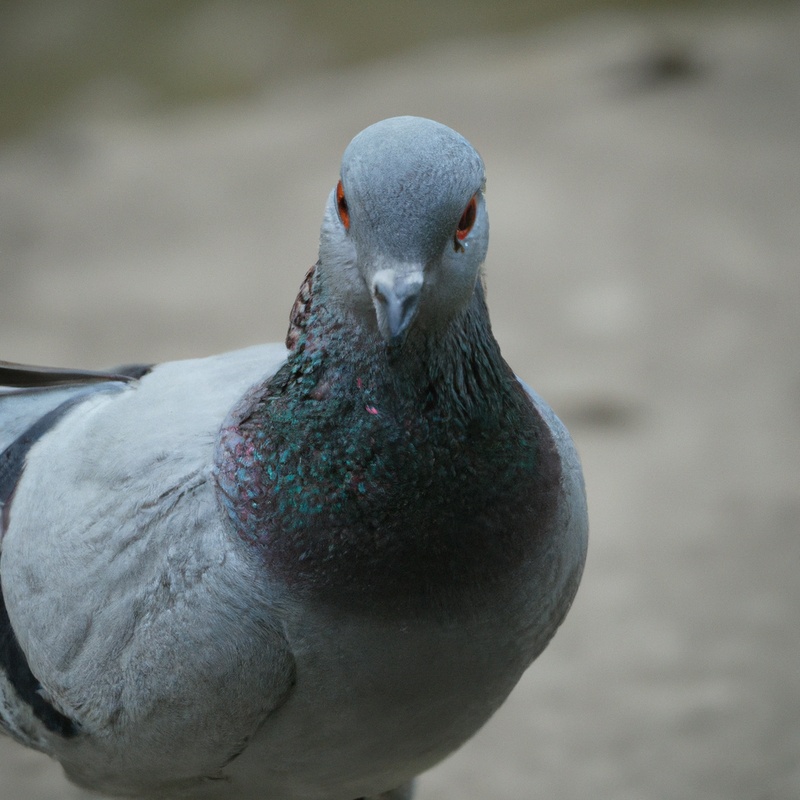
Field Dressing and Cooking Band-tailed Pigeons
Proper Field Dressing Techniques for Pigeons
Proper field dressing techniques are essential when preparing pigeons for cooking. Here’s how to do it:
- Pluck the feathers: Start by plucking the feathers from the bird’s body. This can be done quickly and efficiently.
- Remove the head: Use a sharp knife to cut off the pigeon’s head just below the neck. Dispose of the head properly.
- Gut the bird: Make a small incision around the vent and carefully remove the entrails, being sure to avoid puncturing any organs.
- Rinse and cool: Rinse the bird thoroughly with cold water to remove any remaining blood or debris. Then, place it in a cool, dry place to chill before cooking.
Remember to handle the pigeon with care to ensure the best flavor and quality. Enjoy your freshly dressed and cooked pigeon!
Delicious Recipes and Cooking Ideas for Band-tailed Pigeons
When it comes to cooking band-tailed pigeons, there are plenty of delicious recipes and cooking ideas to try.
One popular method is to marinate the pigeons in a flavorful mixture of herbs and spices, then grill them until they are tender and juicy.
Another option is to roast the pigeons with a medley of vegetables for a hearty and flavorful meal.
You can also try making pigeon stew or using the meat in a traditional pot pie.
The possibilities are endless! Just be sure to follow proper cooking techniques and seasonings to enhance the flavor and enjoy a delicious meal.
Conservation and Ethical Considerations
Understanding the Importance of Conservation for Band-tailed Pigeons
Conservation plays a vital role in protecting band-tailed pigeons and their habitats.
By focusing on conservation efforts, we can help maintain healthy populations of these birds, which are important for biodiversity.
Conservation measures include preserving their nesting sites, protecting their food sources, and managing hunting practices sustainably.
Additionally, research and monitoring are crucial to understand the population dynamics and implement effective conservation strategies.
It’s essential to value and prioritize the conservation of band-tailed pigeons to ensure their long-term survival and the health of our ecosystems.
Responsible Hunting Practices and Ethical Considerations
Responsible hunting practices and ethical considerations should always be at the forefront when engaging in hunting activities. Remember, ethical hunting involves respecting the natural balance of the ecosystem and only harvesting what you need.
This means practicing selective harvesting and avoiding unnecessary waste.
Additionally, hunters should be knowledgeable about and follow all local and state hunting regulations to ensure the conservation of wildlife populations. Ultimately, the goal is to engage in hunting that is sustainable, respectful, and benefits both the environment and future generations.
Frequently Asked Questions (FAQs) about Hunting Band-tailed Pigeons in California
Can non-residents hunt Band-tailed Pigeons in California?
Yes, non-residents can hunt Band-tailed Pigeons in California.
The California Department of Fish and Wildlife allows non-residents to participate in the Band-tailed Pigeon hunting season, which typically runs from September to January.
However, non-residents must obtain a valid California hunting license and purchase the appropriate tags and validations for hunting Band-tailed Pigeons.
It’s important to review and follow all the regulations set by the California Department of Fish and Wildlife to ensure a legal and enjoyable hunting experience.
Are there any restrictions on the use of electronic calls for pigeon hunting in California?
Yes, there are restrictions on the use of electronic calls for pigeon hunting in California.
According to California law, it is illegal to use electronic or recorded calls to attract band-tailed pigeons.
Hunters are only allowed to use hand-operated calls or natural voice calls.
The use of electronic calls can result in fines and penalties, so it’s important to abide by these regulations when hunting band-tailed pigeons in California.
Can I hunt Band-tailed Pigeons in a national park or wildlife refuge in California?
No, you cannot hunt Band-tailed Pigeons in national parks or wildlife refuges in California.
These protected areas have specific regulations in place to preserve and conserve the natural environment and wildlife.
It is important to respect these rules and understand that hunting may only be permitted in designated hunting areas and during specific hunting seasons.
Always check with the local wildlife authorities or park management for the most up-to-date information on hunting regulations and opportunities.
Final Verdict
Hunting Band-tailed pigeons in California can be a thrilling and rewarding experience for hunters.
By understanding the legalities, obtaining the necessary licenses and permits, and using the appropriate gear and techniques, hunters can increase their chances of success.
It is important to remember to practice ethical hunting and conservation to ensure the future of these beautiful birds.
With proper field dressing and delicious cooking recipes, hunters can also enjoy the fruits of their labor.
Overall, hunting Band-tailed pigeons in California is a fantastic opportunity for outdoor enthusiasts to connect with nature and enjoy a unique hunting experience.
